I received an email a couple of months ago from a fan of the site asking if I could review these new Echo Master ligatures (formerly Echo Brass) being sold by Getasax.com. These are reproductions of the infamous Brilhart 3-band ligature that Kenny Garrett uses. I have been curious about these ligatures ever since I saw them selling on Ebay for 1000.00-1500.00 apiece (Yes, that decimal point is in the right place). I was curious, what could possibly be so good about a ligature that it would command that high a price?!
GetaSax Echo Master Brilhart Style Saxophone Ligatures Box
Well, I’m definitely not going to spend that kind of money to find out, but getasax.com has these Echo Master Brilhart 3-Band Style Saxophone Ligatures for sale for a much more reasonable price (although still expensive for a ligature in my opinion 165.00). Here is a description of the ligature from the getasax website:
There’s a reason why the vintage Brilhart 3-Band ligatures have been singled out by the market (players) as by far the most desirable vintage ligatures. They are great ligatures. But there will never be enough vintage Brilhart ligatures to meet the high demand for this style of ligature. Thankfully, the Echo Master company has stepped in to answer this demand.
This Echo Master tenor ligature is a true reproduction: from the alloy of brass to the type of plastic on the reed plate, it is exactly the same as the vintage Brilhart ligature. Same dimensions, same weight, same feel, same playing response. It’s like going back in time to buy one when they were first made!
So for those of you who have always wanted this time-tested style of ligature, but have found them prohibitively expensive, now perhaps getting one is within reach. This is admittedly still an expensive ligature by modern standards. But honestly, to achieve this level of quality of workmanship in Korea where these are made, it just does cost some money. And really, it would do us no good to have a cheaper version of this ligature that was somehow flawed and not as good as the original. Plus, this is probably the last ligature you need to buy, so it may prevent your amassing a whole drawer of inferior ligatures over the course of your career. (You know what I am talking about!)
How does it play? It just plays well. It is just a high quality ligature with heavy duty brass and nice big screws, and that is easy to tighten firmly and evenly. It frees the reed to vibrate with a rich, balanced tone. Compared to a standard ligature, the Echo Master seems richer, more full, and warmer. And it makes playing more fun by making the reed nice and responsive. Just about everyone who has tried one of these in the shop now plays one, including me.-Getasax.com
GetaSax Echo Master Brilhart Style Soprano Saxophone Ligature
I contacted Brian at getasax.com to see about getting a saxophone ligature sent to me to review. He was happy to send a hard rubber tenor mouthpiece ligature to try but then he asked if I would like to try more than just that one? “Of course I would” I emailed back He ended up sending me five Echo Master saxophone ligatures. One for a soprano sax mouthpiece, one for a hard rubber alto sax mouthpiece, one for a Guardala sized metal tenor sax mouthpiece, one for a metal Otto Link tenor sax mouthpiece and one for a hard rubber tenor sax mouthpiece. I could keep one of these ligatures after the review and send the rest back. I was super excited as I usually am about new saxophone gear that I get to try.
GetaSax Echo Master Brilhart Style Saxophone Ligatures from top to bottom: Guardala, Soprano, Metal Otto Link, Hard Rubber Otto Link
The ligatures arrived a couple days later. I opened the package to find these cool looking velvet covered jewlery boxes that have EM Echo Master written on them. I opened one up and to find a beautiful looking sexy sax ligature laying on the dark velvet (Now I know how my wife felt when I asked her to marry me! Haha!).
The ligatures look very well made and sturdy. My first thought was “Let’s handle this thing and see how cheap it is.” Answer: It doesn’t feel cheap at all. It feels like first rate quality to me. The metal does not easily bend and all the connections seem sturdy and reinforced, The screws on top seem very sturdy and turn easily. The plastic plate that sits on the reed also feels strong and well connected to the metal of the ligature as well.
The gold plating looks perfect with no marks or flaws that I can see. The top of the metal part of the ligature that surrounds the mouthpiece is clamped on both sides at the top and the screws go though the clamps as well as the metal of the ligature that is clamped making it extra sturdy.
The next thing I did (I have learned my lesson from doing this so long) is too feel the inside of each ligature with my fingers for any sharp or rough edges. I’ve had a few sax ligatures in the past chew up a sax mouthpiece because I didn’t check for these. The Echo Master ligatures felt as smooth as butter! There is nothing there that will hurt you favorite sax mouthpiece.
GetaSax Echo Master Brilhart Style Hard Rubber Tenor Saxophone Ligature
There are two models of ligatures available from the samples I received. Four of the saxophone ligatures had the white plastic reed plate and black bulbed screws and one alto saxophone ligature that you can see a couple of photos below has a “B” at the head of each screw. The plate on this alto sax ligature is metal instead of plastic.
As I wrote above, I was super excited that I could try all these saxophone ligatures and get to keep one, but as I started to try each ligature my excitement turned to confusion as there were elements of every ligature that I really liked. Which ligature would I choose to keep?! As I type this review, I still have no idea which ligature I am going to choose and there is no way I can afford to buy all of them that is for sure. Quite the conundrum………
GetaSax Echo Master Brilhart Style Hard Rubber Tenor Saxophone Ligature
The first ligature I tried was the one for the hard rubber tenor saxophone mouthpiece that has a “T” engraved on it.
The Echo Master ligature slid on to my Early Babbitt Otto Link easily. I centered the plate on the reed and tightened the ligature to what I thought was a reasonable tightness. Each ligature has two screw on the top side of the ligature and as you tighten the ligature it tightens around the mouthpiece and the plate tightens against the reed.
The first thing I love about these ligature is that the screws sit a good distance from the top of the sax mouthpiece. I have tried other sax ligatures (I won’t mention names….) that as you tighten the screw the ligature gets closer to the body of the mouthpiece and next thing you know the screw is digging into the top of the mouthpiece and making a mess. You don’t have to worry about this with the Echo Master as they constructed it wisely and this can’t happen with this design that I can see.
The other thing I love about these ligatures is that they made the screws extra long. You can see in the third photo below how there is still a lot of screw that isn’t being used even with the ligature tightened all the way. I can’t tell you how many times I have bought a sax ligature and when I tighten it on the mouthpiece, it uses up almost all of the screw length. If the ligature were to stretch even a little bit the ligature wouldn’t be able to be tightened any more and would be useless. The Echo Master craftsman did well in thinking of this and making the screws extra long.
The hard rubber tenor mouthpiece ligature fit on all of my hard rubber tenor saxophone mouthpieces because of the long screws that could be widened extra wide or tightened down to be smaller. The only one that was a close call was my Lamberson J7 tenor mouthpiece but with the Echo Master screw almost all the way loosened it could barely slide to the rear of the Lamberson so I count that as a success.
GetaSax Echo Master Brilhart Style BB Hard Rubber Alto Saxophone Ligature with Metal Plate
The next sax ligature I tried was the one that has “OT” on it. I assume this is for “Otto Link Tenor”. Saxophone ligatures for metal Otto Link tenor sax mouthpieces can be tricky because of that Otto Link ridge on the top of the mouthpiece. This ligature was made perfect though. As you can see in the fifth picture below. The makers of the Echo Master left enough room with the long screws so that the ligature tightens around the ridge and the screws are high enough that they don’t come close to it.
The “OT” ligature fit all of my metal Otto Links well including a fatter NY Otto Link I have. As a side bonus for me, this ligature also fit my Barone tenor sax mouthpieces perfectly also! The Barone mouthpiece shape is a little more difficult to find a good ligature for because it is fatter near the back of the mouthpiece and narrower near the front but the Echo Master with its long screws fit perfectly. You just open up the back screw and close down the front screw and it fit the Barone mouthpiece perfectly.
I will also note at this point, that once these ligatures are tightened down they do not move which is a huge plus in my book. I have used sax ligatures in the past that moved too easily as soon as you try to move your mouthpiece. This stinks when your playing and the reed slides out of place and messes you up. It also stinks if you end up scratching the mouthpiece with the ligature as I have done with ligatures in the past (and even last week actually…..)
GetaSax Echo Master Brilhart Style BB Hard Rubber Alto Saxophone Ligature with Metal Plate
The next ligature I tried was the Echo Master soprano saxophone ligature with an “S” engraved on it. It fit my Gaia soprano sax mouthpiece perfectly and I was quite surprised by how much I liked the change in response and sound to my soprano but I will get to that below.
Lastly, just for the sake of being thorough, I tried the alto BB ligature and the Guardala ligature (engraved with a “G”). The alto ligature had a BB on the screws like I mentioned above and is sized to fit standard hard rubber sized alto mouthpieces. The Guardala ligature fit my Guardala sized Liu Shizhao Pilgrimage tenor saxophone mouthpiece perfectly also. If you have ever owned a Guardala sized tenor sax mouthpiece, you know that these can be a pain to find a good ligature for because of their smaller size. The Echo Master fit perfectly though. I am very tempted to keep this one just because I only have one cheap metal ligature that I have been using with this Guardala sized tenor sax mouthpiece for the past couple of years.
GetaSax Echo Master Brilhart Style Hard Rubber Tenor Saxophone Ligature From the Side
One other element of these ligatures that I should note before I move on to how they play is about the plates. The Echo Master BB alto sax ligature has a metal plate that looks like it 100% sits on the reed. The other four ligatures with the plastic plates have a raised edge on each side of the plate so that the side ridges are the only place touching the reed. You can see this if you look closely at the last photo in this review below.
GetaSax Echo Master Brilhart Style Hard Rubber Tenor Saxophone Ligature Showing the Long Screws
So how do these sax ligatures play? I know you are all waiting for that answer. I appreciate Brian at getasax.com first of all for not making any sax ligature based grandiose claims in his descriptions on his site. (You know the ones I am writing about…..). I will try to do the same while trying to convey my experience.
The first thing I will write is that, in my experience, saxophone ligatures with top screws can be tricky to gauge the exact tightness of the reed plate on the reed. With my Francois Louis, Vandoren Optimum, Selmer 404, etc……the screws to tighten the ligature are on the bottom of the ligature. You tighten the screw and you can feel how tight the ligature is against the reed. I have noticed that when I try sax ligatures with the screws on the top I don’t have as good a feel for how tight the ligature is on the saxophone reed.
When I first tried the Echo Master ligature, I tightened down the screws on top until they wouldn’t move anymore. When I went to play, I hated the sound and response. It seemed very tight, constricted and small sounding. I did not like it but then thought that maybe I overtightened the ligature and was strangling the saxophone reed so it wasn’t vibrating freely. I backed the screws out about a quarter turn to half turn and then played again. Totally different experience! Bigger sound, more easy blowing and quick response. Whew!
GetaSax Echo Master Brilhart Style Metal Otto Link Tenor Saxophone Ligature Showing Plate on Reed
In my opinion, the Echo Master ligature with the plastic bite plate makes the reed respond and sound differently depending on the tightness of those two screws on top. I found that if I tighten the screw to just be “tight enough”, where the reed doesn’t move when you touch it, but no tighter than that, the reed plays with a darker more spread sound. If I tighten the ligature a little bit at a time I feel like it gets more of a focused and centered sound. If I tighten to much, it feels constricted and hard to manipulate as far as expression and nuance.
I also found that if I loosened the front screw and tightened the back screw or tightened the front screw and loosened the back screw, I would also get different results depending on the reed I was using. All those minute changes in tightness and looseness seemed to have an affect on the response and sound I was hearing as I played. Would the audience hear the change of a quarter turn of a ligature screw, probably not, but it’s not about them, it’s about me and getting the sound in my head out of the saxophone, right?
GetaSax Echo Master Brilhart Style Metal Otto Link Tenor Saxophone Ligature avoiding the Link Ridge
The biggest change for me was with the soprano sax ligature. I was using a Gaia soprano saxophone mouthpiece with a Theo Wanne Enlighted ligature which gives me a pretty bright focused sound. The Echo Master soprano ligature seemed to darken and fatten up the soprano sound in a very cool way. Instead of this brighter aggressive sound I usually get, it was a lot more mellow and emotional. Something about it made me think of Jan Garbareck’s soprano sax sound (which is beautiful by the way…….). It was enough of a change that I thought “Man, I have to keep this soprano sax ligature!”
GetaSax Echo Master Brilhart Style Metal Otto Link Tenor Saxophone Ligature on Florida Otto Link
The bottom line for me, is that the Echo Master fits all these sax mouthpieces perfectly. It is well made and sturdy. It doesn’t move when you try to move your sax mouthpiece. It is easy to put on and center on the reed. It is easy to tighten and adjust. Even as you are playing, you can reach up a hand and easily try tightening or loosening the back screw or front screw to see what affect it has on your saxophone tone or response which I think is really cool! It also looks pretty darn cool with the mystique of the Brilhart 3-band Kenny Garrett ligature phenomenon that is going on. As a side benefit, other sax players will think you are loaded if you can afford this Brilhart 3-band sax ligature and that fake Rolex you are wearing……….Haha!
GetaSax Echo Master Brilhart Style Hard Rubber Tenor Saxophone Ligature with Plate on Reed
If you are interested in the GetaSax Echo Master Brilhart Style Saxophone Ligature you can find out more information and order one at getasax.com. If you have any questions feel free to contact Brian at getasax.com and he can answer any questions you might have. Getasax.com also look like they have a generous return policy if you would like to try one but check with Brian to confirm that. If you try an Echo Master saxophone ligature or have any other thoughts or comments, I would love to hear what you think in the comments below.
Thanks, Steve
PS. Brian added this in the comments below but I wanted to add it here so no one misses it that is reading this review:
The EchoMaster ligatures have a generous amount of threading on the screws, which makes them more flexible than other ligatures to fit mouthpieces of different diameters.
For example the Hard Rubber alto size actually fits metal Otto Link Baritone mouthpieces perfectly, because of the screws. For alto, it fits everything from the narrow Selmer Soloist to the Meyer Bros ‘Fat Boy’ which is basically the full range of alto pieces.
And the Guardala size tenor ligature fits metal Yanagisawa, and Ishimori Anemos, and lots of others. (Dukoff Miami, the slimmer Bergs)
The OT metal Otto Link ligs are also just about the only non-Rovner ligatures (afaik) that fit metal 10MFan and MacSax and other wide body metal tenor pieces. But it also fits vintage Bergs of the standard and wider body variety, as well as Dukoff Hollywood and Dukoff Stubby. It’s very useful. I don’t know of another ligature that fits the Dukoff Stubby as well, and that’s my favorite vintage metal mouthpiece.
The Soprano size fits everything from Selmer Soloist to Meyer to Otto Link Tone Edge, and even some of the very large vintage soprano pieces like Conns and Bueschers.
Email me at getasax@gmail.com if you’re reading this and want to know if your mouthpiece is compatible.
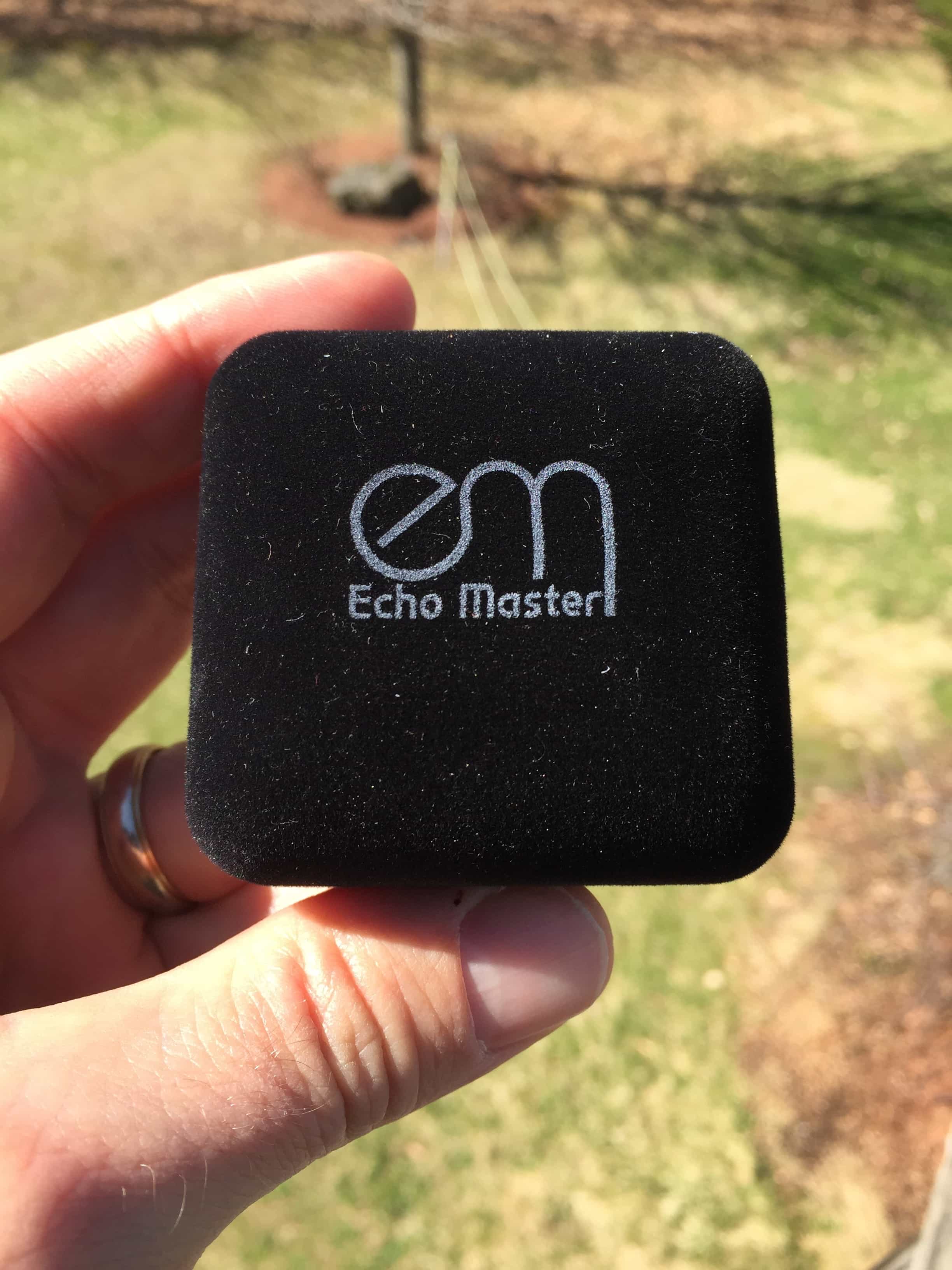

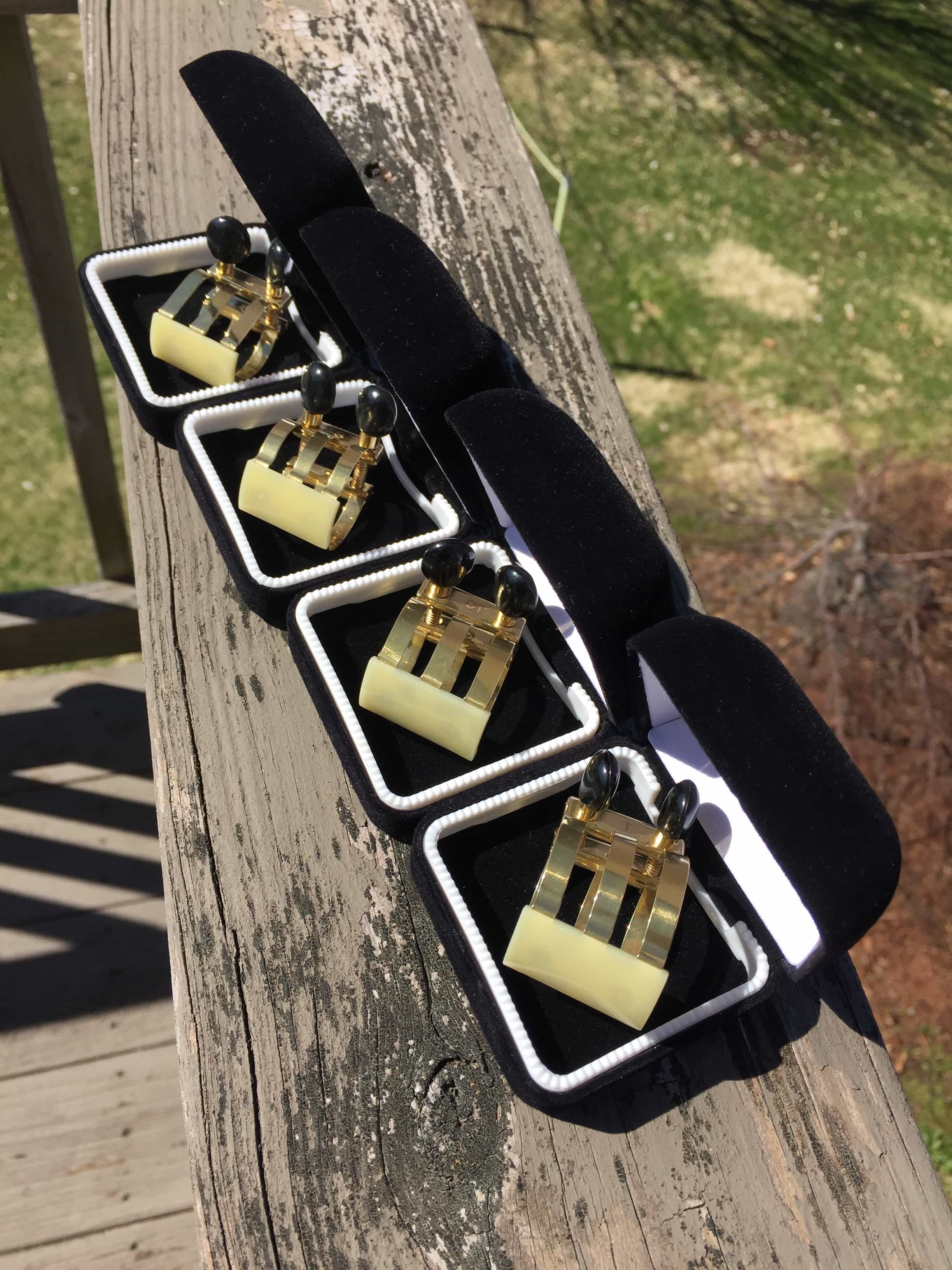
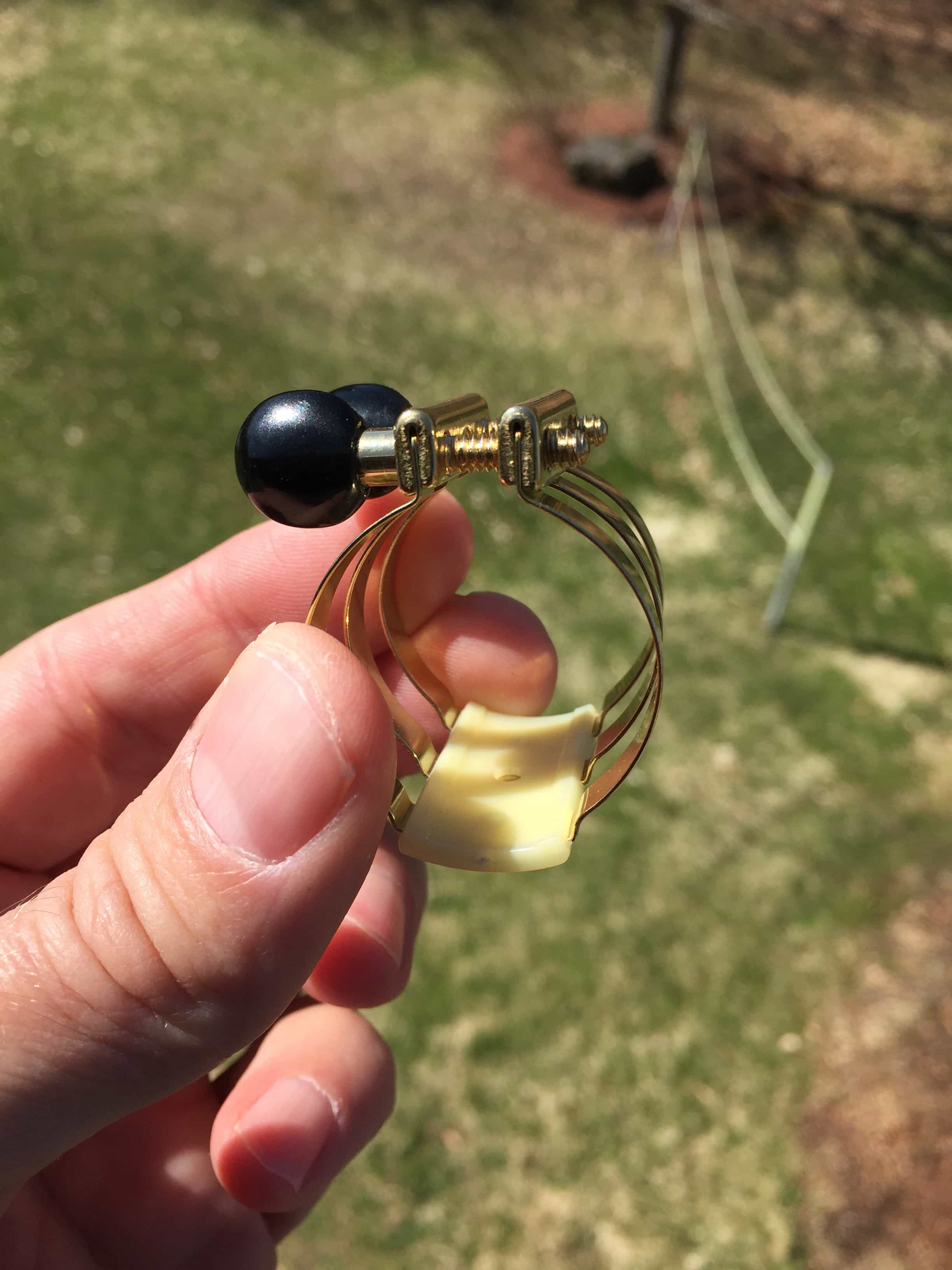
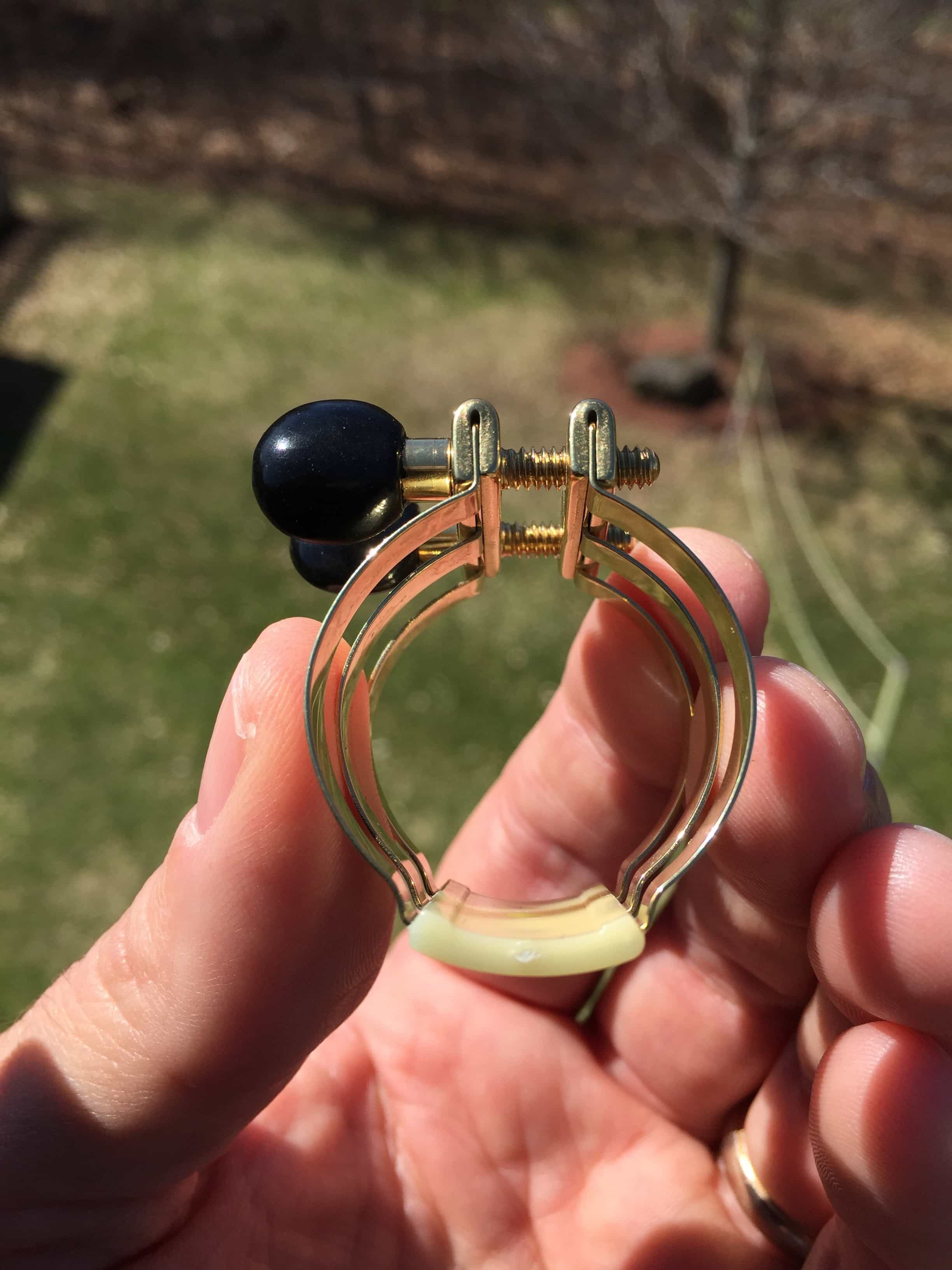
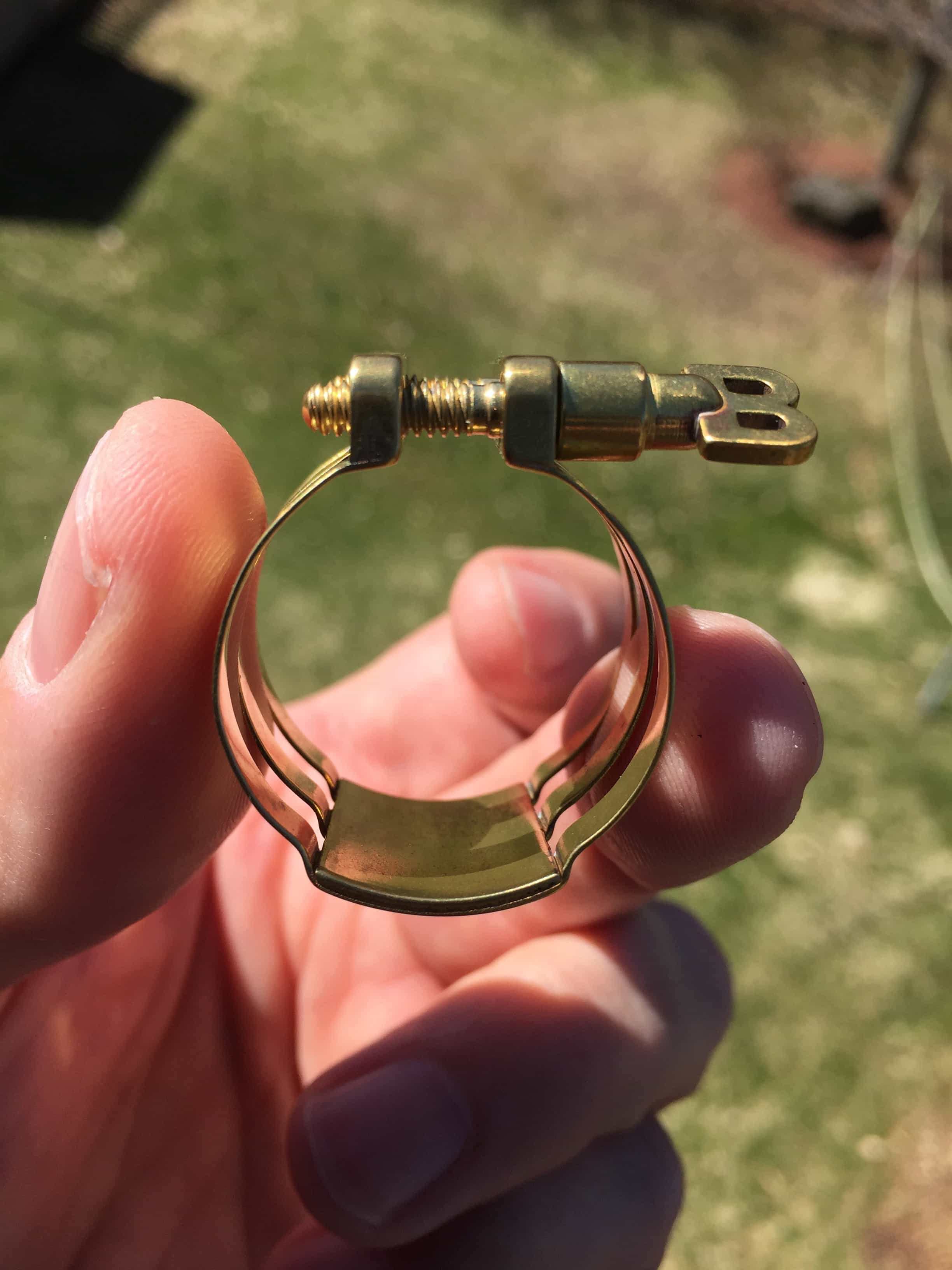
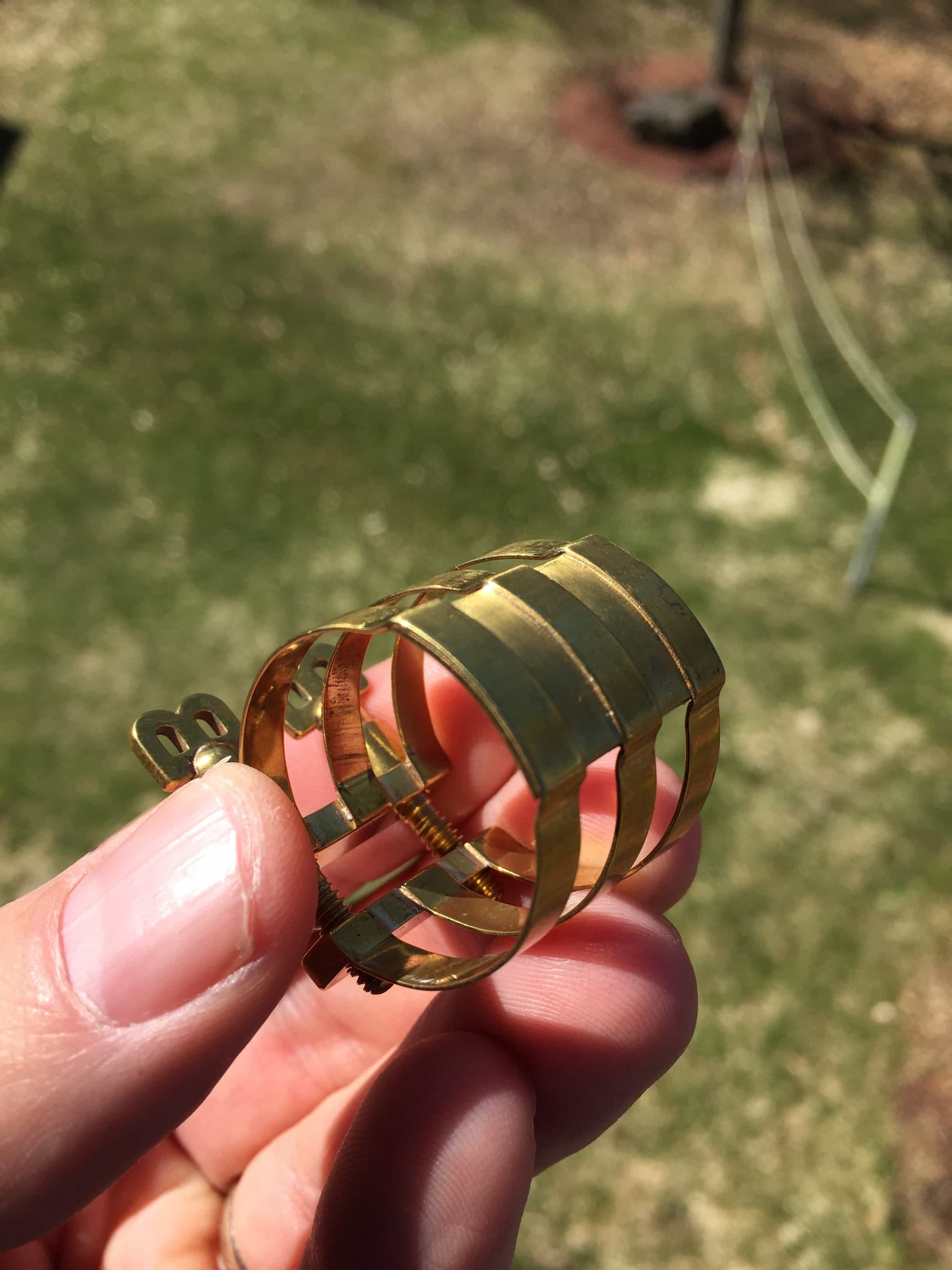
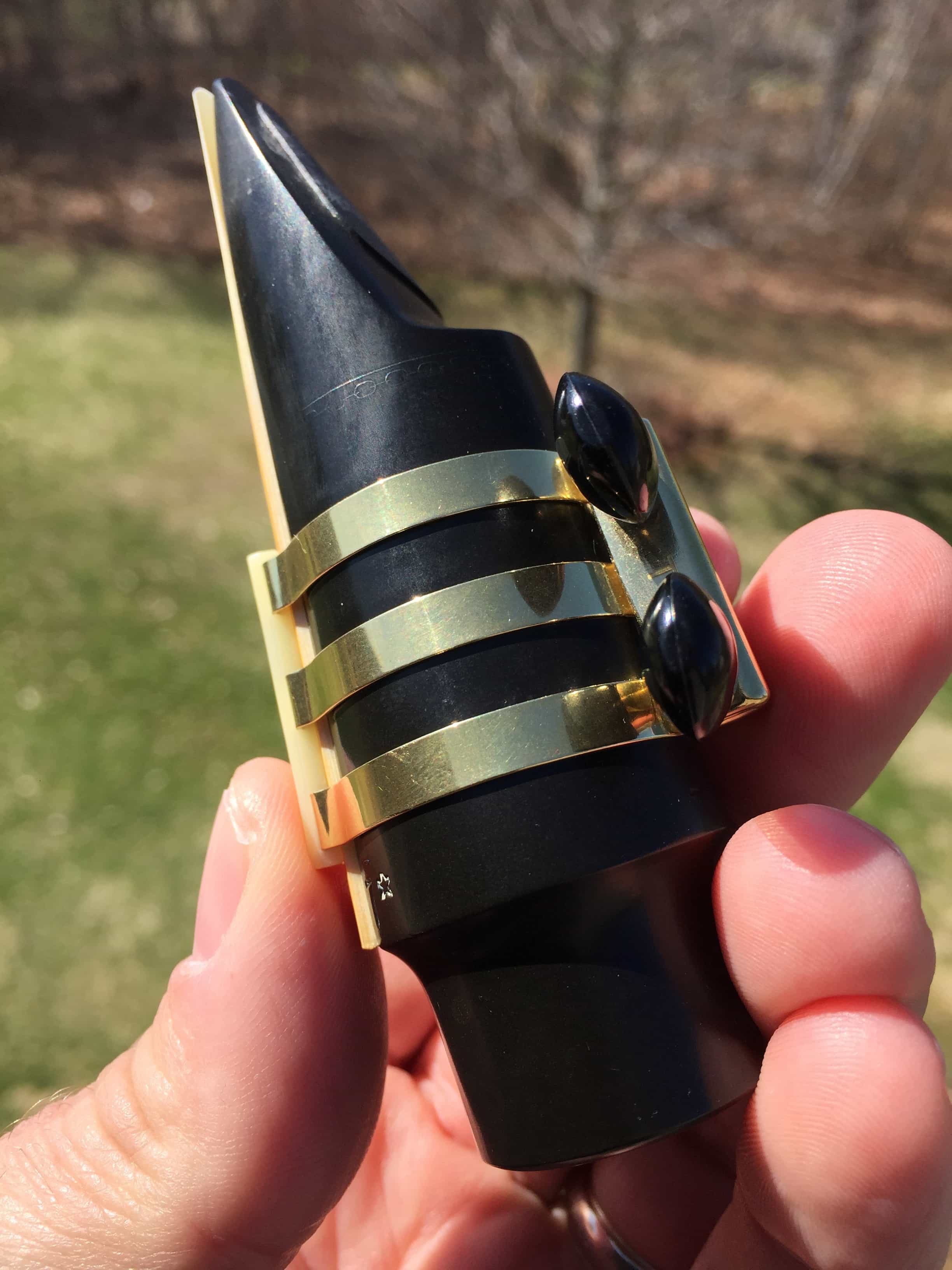
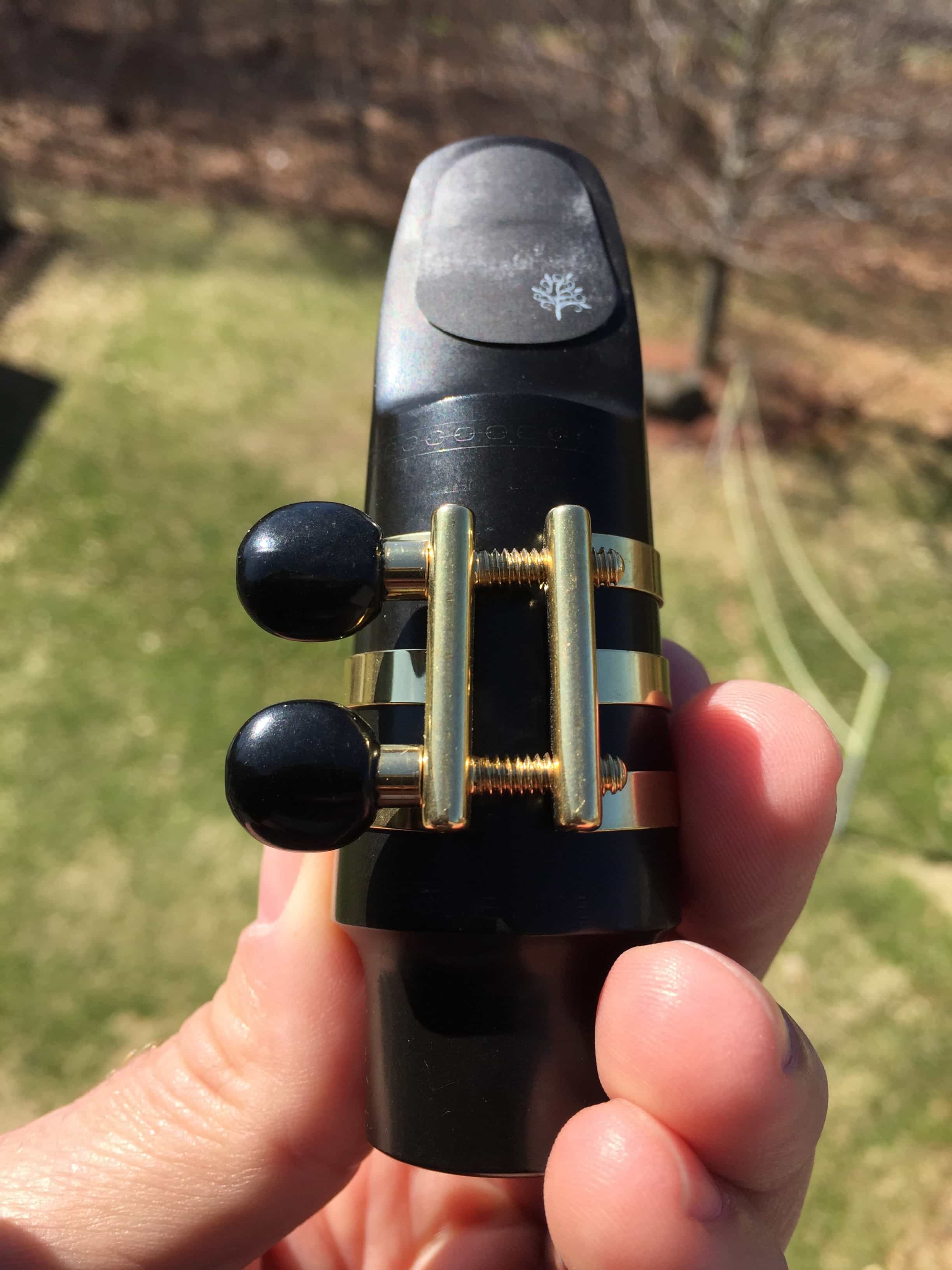
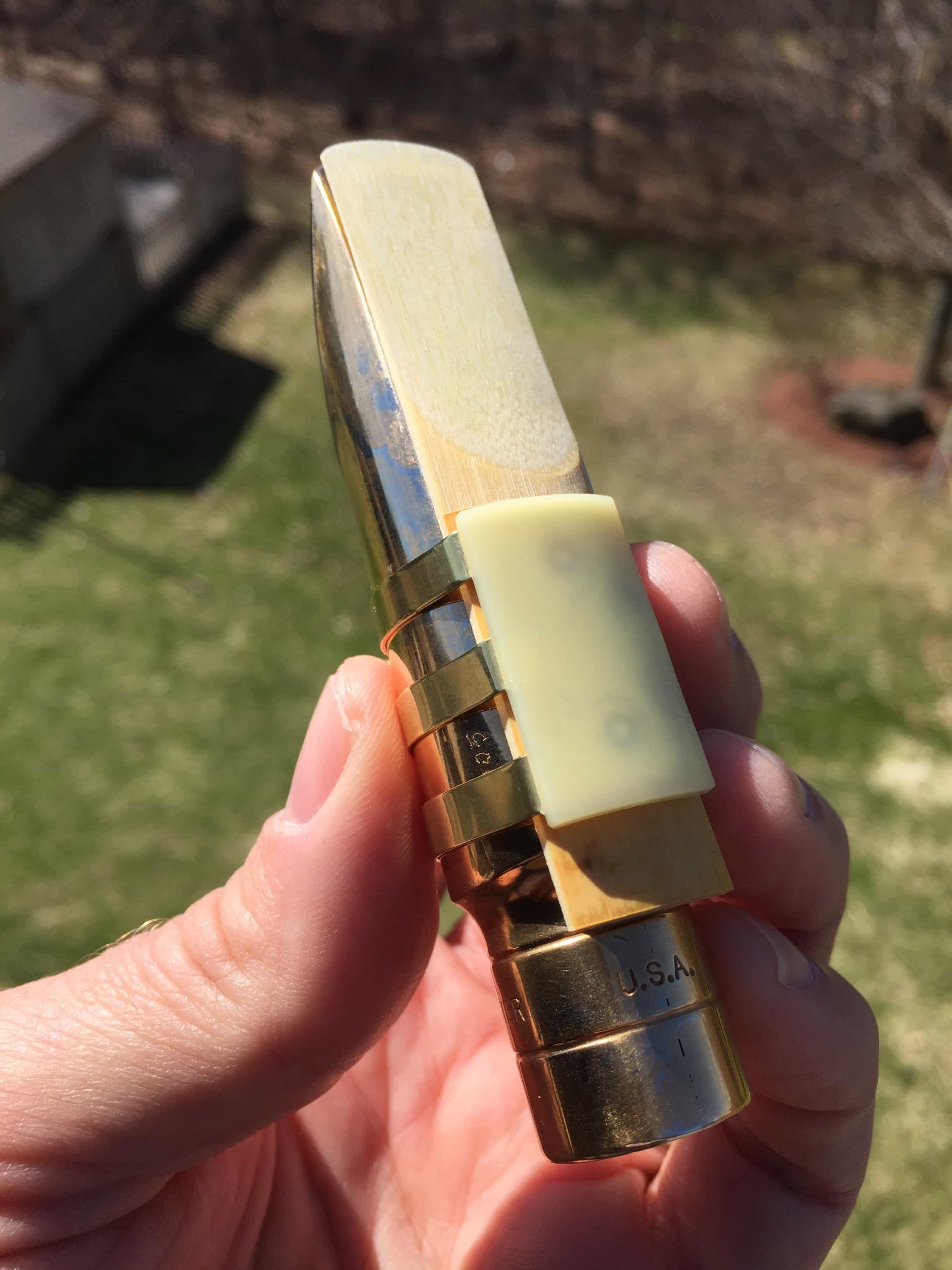
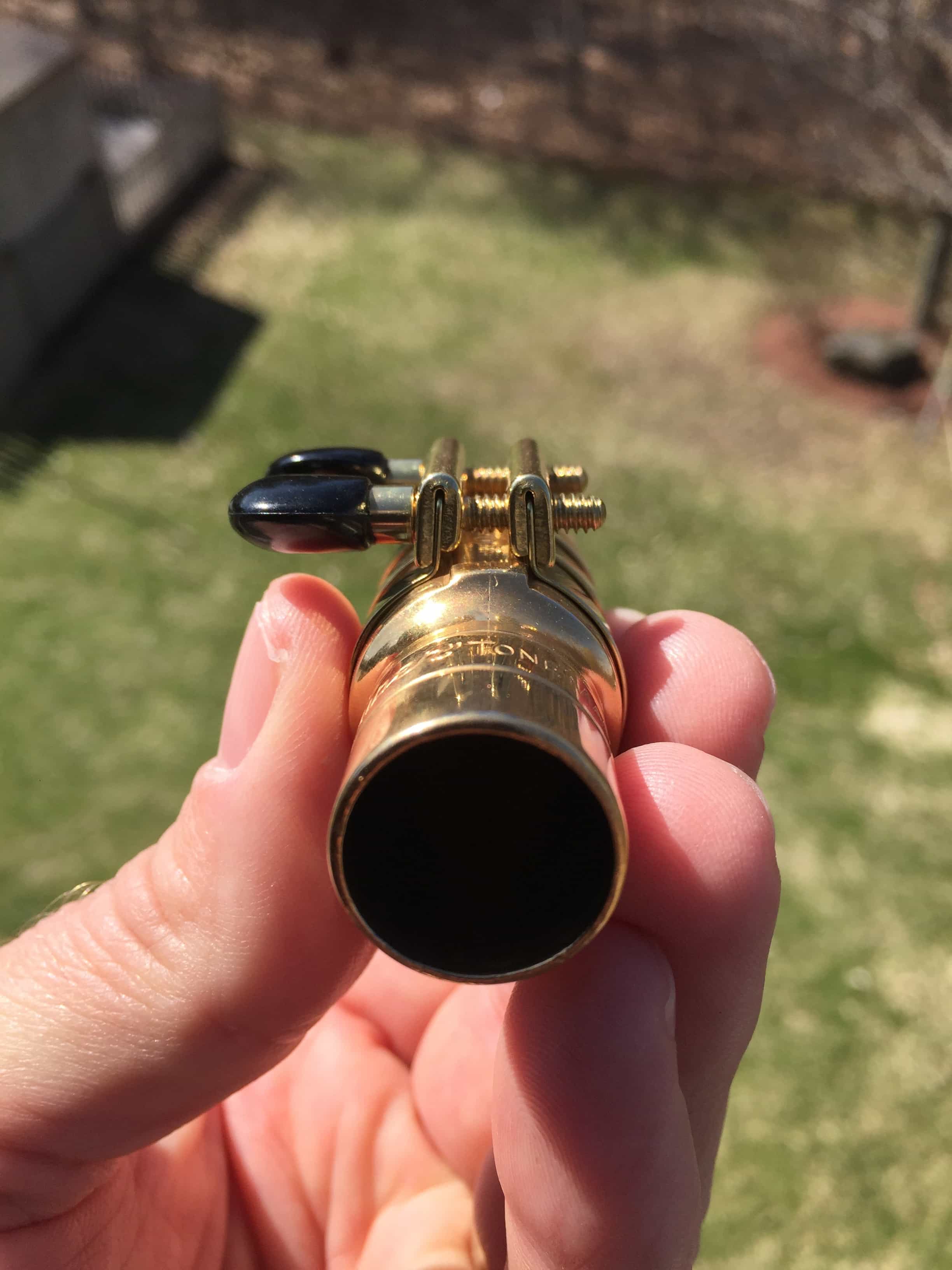

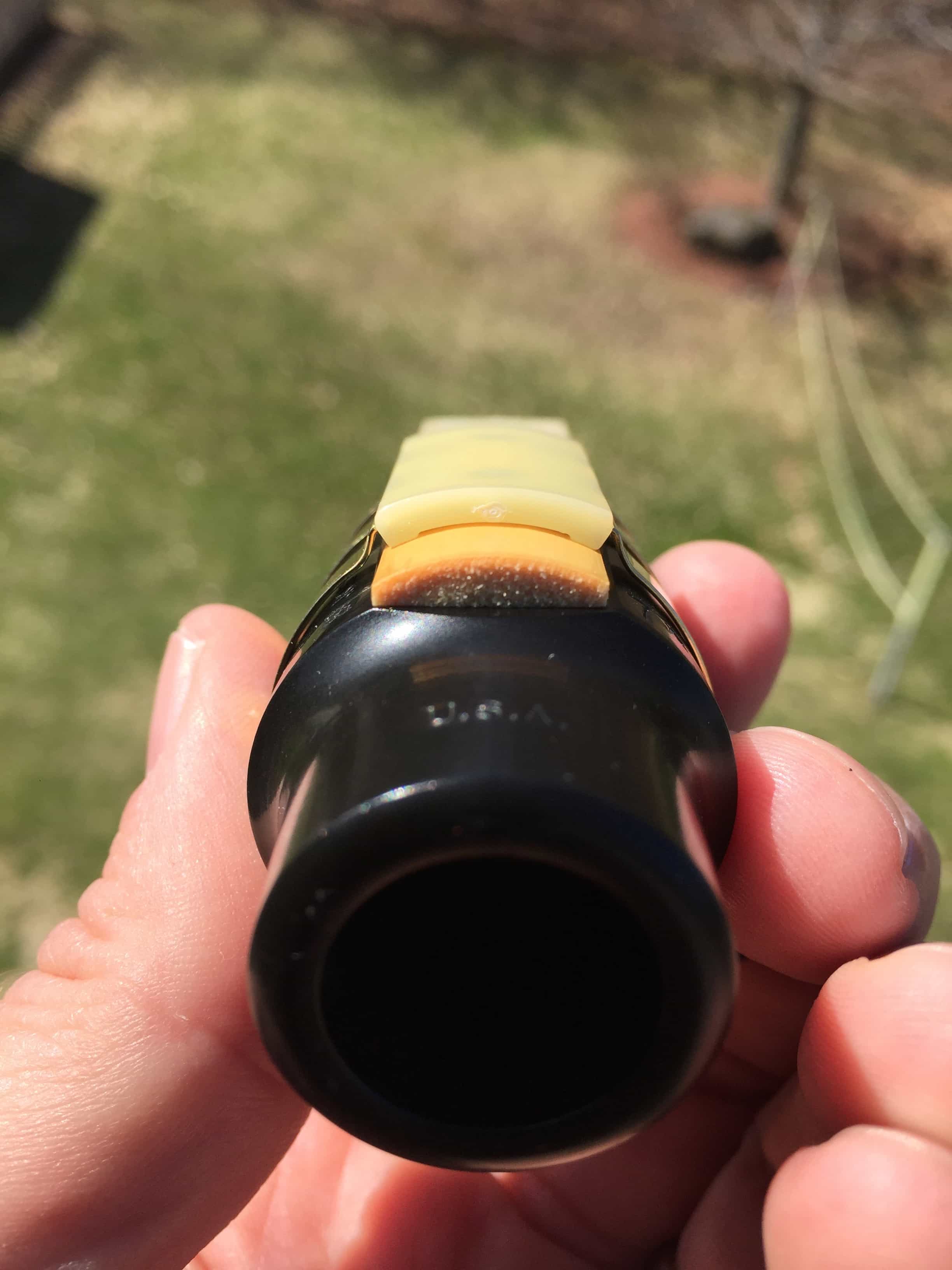



Brian here from GetASax.com checking in to add a bit of info at Steve’s prompting.
This is just a bit of extra info about what mouthpieces these ligatures will fit.
The EchoMaster ligatures have a generous amount of threading on the screws, which makes them more flexible than other ligatures to fit mouthpieces of different diameters.
For example the Hard Rubber alto size actually fits metal Otto Link Baritone mouthpieces perfectly, because of the screws. For alto, it fits everything from the narrow Selmer Soloist to the Meyer Bros ‘Fat Boy’ which is basically the full range of alto pieces.
And the Guardala size tenor ligature fits metal Yanagisawa, and Ishimori Anemos, and lots of others. (Dukoff Miami, the slimmer Bergs)
The OT metal Otto Link ligs are also just about the only non-Rovner ligatures (afaik) that fit metal 10MFan and MacSax and other wide body metal tenor pieces. But it also fits vintage Bergs of the standard and wider body variety, as well as Dukoff Hollywood and Dukoff Stubby. It’s very useful. I don’t know of another ligature that fits the Dukoff Stubby as well, and that’s my favorite vintage metal mouthpiece.
The Soprano size fits everything from Selmer Soloist to Meyer to Otto Link Tone Edge, and even some of the very large vintage soprano pieces like Conns and Bueschers.
Email me at getasax@gmail.com if you’re reading this and want to know if your mouthpiece is compatible.
The alto HR lig also nicely fits on a clarinet mouthpiece.
I forgot, people often ask me about compatible mouthpiece caps. The D’Addario caps made for inverted ligatures fit perfectly. I have those in stock that I can sell you for a great price with a ligature, or you can buy one wherever. I am also coming out with Brilhart style caps that look like the vintage ones, just for fun, but they’re not available yet. And I have a small number of original vintage Brilhart caps that fit hard rubber alto pieces, if you really want one of those.
Thanks, Steve, for this excellent and very thorough review!
So, the difference between the plastic plate and the metal plate is……?
Hey Steve – did you happen to try this with the Otto Link 100 Anniversary Florida Tenor? I’m curious which one fits that piece since the body is a little bigger
Brian, Yes, it fits perfectly because the screws are so long. The back screw can be unscrewed a lot and the front screw tightened to fit a piece like this one that is wider in the back. Steve
On the plastic plate versus metal plate question, three thoughts.
1. The metal plate contacts the entire reed surface, where the plastic plate contacts mostly the edges of the reed. I personally can’t tell a difference in sound between the two, but…
2. Buyers tell me they think the metal plate version sounds slightly brighter, and the plastic plate slightly warmer. I would say pick based on which you like the look of. I use both types. Metal on alto, plastic on soprano and tenor.
3. You can hear a high quality sound sample of both types compared by Greg Vail here: https://youtu.be/bUIxE_R_Cdg
By the way, I just got in two new styles:
1. BB screws Otto Link metal style ligatures to go with the plastic ones that were already here.
2. Beechler metal (thin body) alto size plastic and BB screws for any very thin metal alto pieces. I’ll try them on some other metal alto pieces to see what they fit besides Beechler.
Brian, For the new styles on #1: Are those new BB screws ligature styles for HR Otto Links or the metal Otto Links? Thanks, Steve